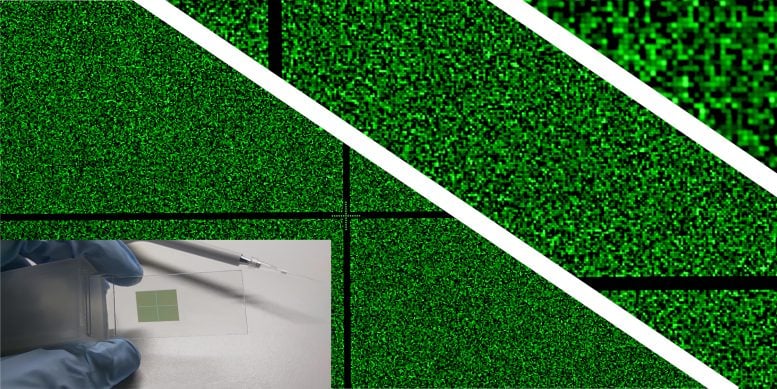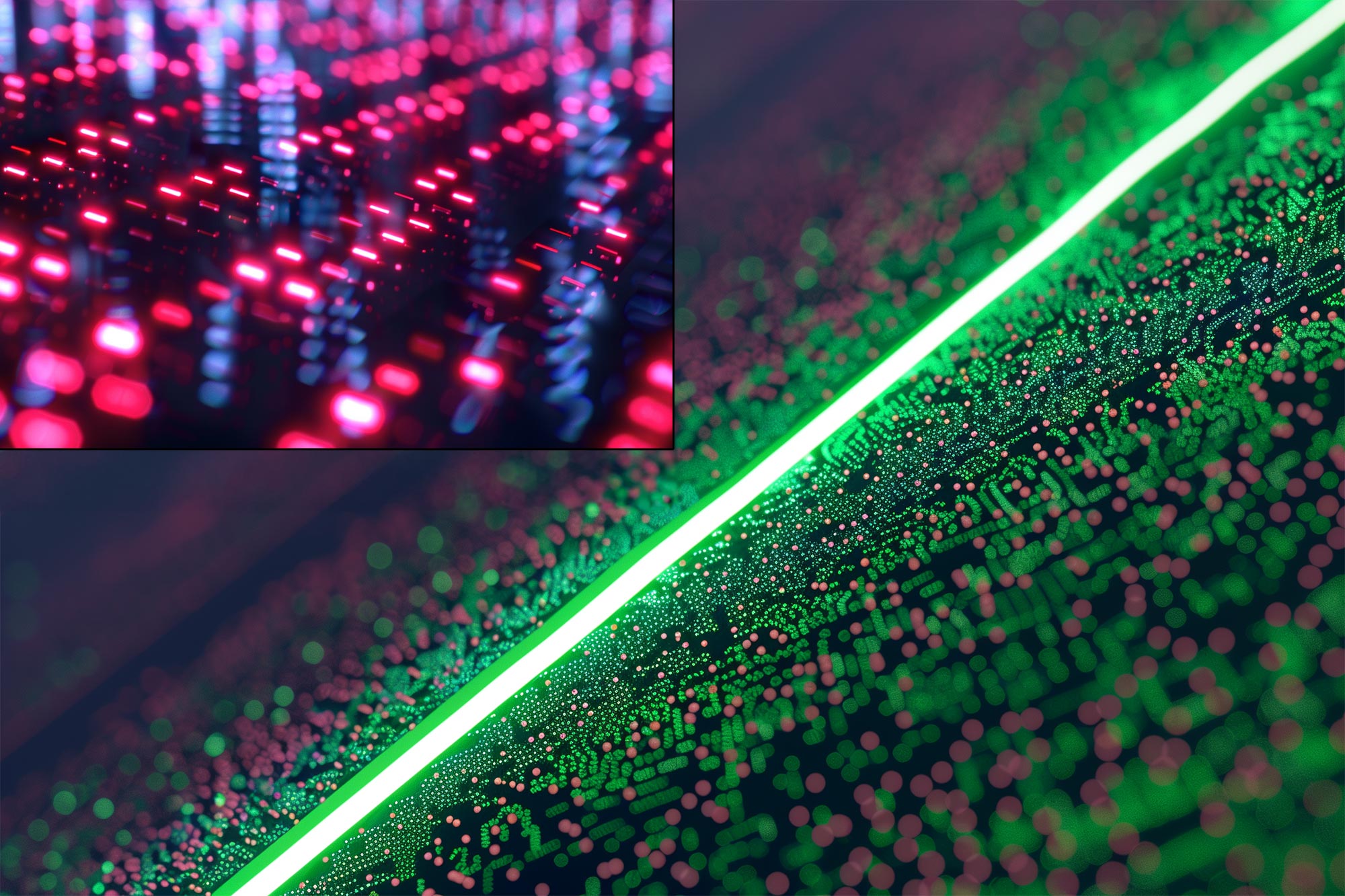An international research team led by the University of Vienna has developed a new version of RNA building blocks with higher chemical reactivity and photosensitivity, significantly reducing the production time of RNA chips. (Artist’s concept.) Credit: SciTechDaily.com
Scientists achieve breakthrough: chemical synthesis of high-density 
A full-size, high-density RNA microchip is about the size of a fingernail and can contain up to 780 000 unique RNA sequences, each occupying a ~14 x 14 μm² area. The presence and the quality of the RNA can be verified via the addition of a complementary DNA strand with a green fluorescent tag. Credit: Tadika Kekić
Overcoming Challenges in RNA Microarray Production
This chemical method is also used in the production of microchips (microarrays), where millions of unique sequences can be synthesized and analyzed simultaneously on a solid surface the size of a fingernail. While DNA microarrays are already widely used, adapting the technology to RNA microarrays has proved difficult due to the lower stability of RNA.
In 2018, the University of Vienna demonstrated how high-density RNA chips can be produced through photolithography: by precisely positioning a beam of light, areas on the surface can be prepared for the attachment of the next building block through a photochemical reaction. Although this first report was a world first and remains unrivaled, the method suffered from long production times, low yields, and poor stability. This approach has now been greatly improved.
Development of a New Generation of RNA Building Blocks
A team from the Institute of Inorganic Chemistry at the University of Vienna, in collaboration with the Max Mousseron Institute for Biomolecules at the University of Montpellier (France), has now developed a new version of RNA building blocks with higher chemical reactivity and photosensitivity. This advance significantly reduces the production time of RNA chips, making synthesis twice as fast and seven times more efficient. The innovative RNA chips can be used to screen millions of candidate RNAs for valuable sequences for a wide range of applications.
“Making RNA microarrays containing functional RNA molecules was simply out of reach with our earlier setup, but it is now a reality with this improved process using the propionyloxymethyl (PrOM) protecting group,” says Jory Lietard, Assistant Professor at the Institute of Inorganic Chemistry.
Practical Applications and Benefits of Improved RNA Chips
As a direct application of these improved RNA chips, the publication features a study of RNA aptamers, small oligonucleotides that specifically bind to a target molecule. Two “light-up” aptamers that produce fluorescence upon binding to a dye were chosen and thousands of variants of these aptamers were synthesized on the chip. A single binding experiment is sufficient to obtain data on all variants simultaneously, which opens the way for the identification of improved aptamers with better diagnostic properties.
“High-quality RNA chips could be especially valuable in the rapidly growing field of non-invasive molecular diagnostics. New and improved RNA aptamers are critically sought after, such as those that can track hormone levels in real-time or monitor other biological markers directly from sweat or saliva,” says Tadija Kekić, PhD candidate in the group of Jory Lietard.
Reference: “Accelerated, high quality photolithographic synthesis of RNA microarrays in situ” 31 July 2024, Science Advances.
DOI: 10.1126/sciadv.ado6762
This work was financially supported by a joint grant of the Agence Nationale pour la Recherche/Austrian Science Fund (FWF International Program I4923).















.png)




Discussion about this post